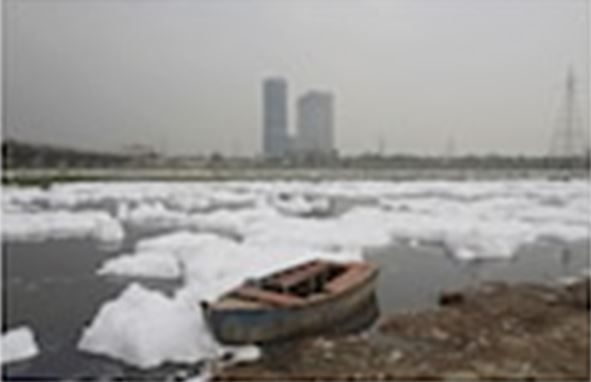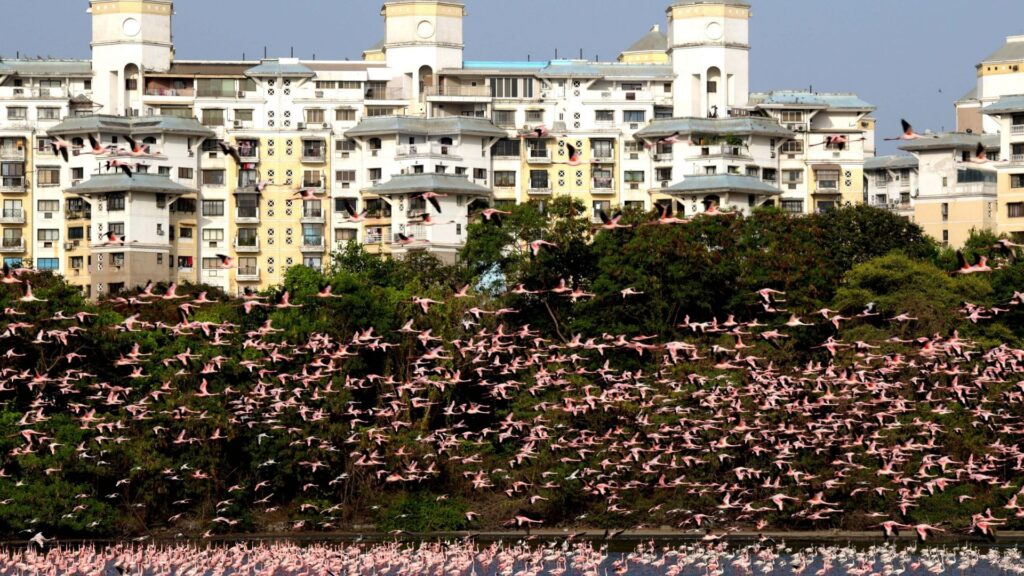Gopabandhu Mohapatra

The country has been in lockdown since March 24 to tackle the spread of the deadly coronavirus that has affected thousands in India. India has put its 1.3 billion citizens into a strict lockdown and businesses were temporarily closed, factories have stopped activities, domestic and international flights have been suspended, ground travel has decreased and people across the country were asked to maintain social distancing as much as possible.
But the lock down apparently caused positive changes in the environment. The sky and river water seems cleaner. Visuals of a cleaner River Ganga have emerged. While in most parts of Delhi, the water of River Yamuna has also started to appear clearer and the heavy amount of toxic foam that is usually seen around the year has vanished. The experts have opined that the toxic foam is the result of a mix of sewage, detergents and chemicals from industrial waste. The stoppage of industrial pollutants and industrial waste has definitely had a positive effect on water quality.

The lockdown has also led to better air quality. In New Delhi, the average concentration of Particulate Matter 2.5 (PM 2.5) came down. Nitrogen Dioxide, a pollutant, has also witnessed a decline by 71 per cent. Delhi recorded a 44% reduction in PM10 air pollution levels. India’s Central Pollution Control Board found the PM10 standard measures airborne particulates 10 micrometers or smaller in diameter.
Aerosols from human sources like motor vehicles and factory production hugely contribute to air pollution. With such a quick and drastic decrease in human activities, NASA satellites have detected the lowest aerosol levels in 20 years over the whole country.
Delhi is the world’s most polluted city and it has resulted in some of the fresh air, the capital has seen in decades. In Delhi, air quality index (AQI) levels are usually a severe 200 on a good day (anything above 25 is deemed unsafe by World Health Organization). During peak pollution periods last year they soared well into a life-threatening 900. But as Delhi’s 11 million registered cars were taken off the roads and factories and construction were ground to a halt, AQI levels have regularly fallen below 20. The skies were a rare blue.

People in the northern Indian state of Punjab are surprised at the sight of the Himalayan mountain range, which is now visible from more than 100 miles away due to the reduction in air pollution and had not been sighted on the Punjab horizon for almost three decades. The fall in air pollution had reduced pressure on health services at an important time and shown how much of a difference air quality improvements can make.
Health experts said the findings echoed their experience during the pandemic. “We have seen many fewer patients admitted with exacerbations of asthma and COPD chronic obstructive pulmonary disease over the last month and there is no doubt that a fall in air pollution is part of the reason.
Sharp falls in road traffic and industrial emissions have also resulted in 6,000 fewer children developing asthma, 1,900 avoided emergency room visits and 600 fewer preterm births. Better air was not the only noticeable change. Several vulnerable animals have also been spotted in the cities across the world. Within a few days of the lockdown, a ‘Nilgai’ was seen wandering on the streets of Noida’s busiest sector, Sector 18, opposite the Great India Place mall. Before that, a rare Malabar civet was seen in Kozhikode, Kerala.
Wild animals roam empty streets, as if nature is reclaiming urban areas. For breathing pure air to greener trees, spotting various wildlife into the cities here are some important environmental changes that we have seen for coronavirus lockdown.

Thousands of flamingos have gathered in the city of Navi Mumbai. The birds normally migrate to the area every year, but residents have reported that this year they have seen a massive increase in their numbers. Critically endangered, Dolphins also known as Ganges Dolphins have been spotted back in the Ganga river after 30 years.
The Uttarakhand Pollution Control Board, who is involved in the Clean Ganga project when asked about the rapid improvement in the water quality of Ganga, they expressed satisfaction. Earlier, the Union government has proposed to spend Rs 20,000 Crores till 2019–2020 on cleaning of the river. The current scenario should shape our future approach of how authorities should minimise industrial effluents in the water bodies. The current crisis has shown us that clear skies and breathable air can be achieved very fast, if concrete action is taken to reduce burning of fossil fuels (coal).

The response has offered a glimpse of the cleaner, healthier environment that is possible if the world shifts away from polluting industrial effluents. There can be a move to a shift in reducing traffic on the road by asking people to work from home in shifts, so that the benefits to millions will experience clean air for the whole of the years.
Let us hope, we shall move to a future and refined lifestyle to preserve Mother Nature and to restore our planet earth from the destruction that had been caused during the past years. Let us pledge that by 2027, on the eve of 75th anniversary of Independence, to reduce pollution by 75% in all major cities.
Cleaning up of the air should be the key parameter.






















Really it’s true to say that every coin has a two aspects,as while from everywhere we are just getting the negative side amid covid-19 lockdown but how can we forget that other positive side during this pandemic lockdown.
Our environment, which we did many harm to this by polluting,today it’s healing itself naturally and that too without any human efforts.Many good things happening with our environment in this lockdown period which directly also benefiting to the wildlife.Even the ozone layer which protects us from UV rays has also healed a lot , earlier which scientists found a hole in this layer.
So I am agree with this article conclusion that after this pandemic over ,we should all think of the positive side of the lockdown and that too for our environment and wildlife